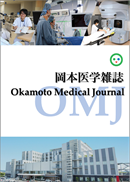Clostridioides difficile infection (CDI) is an infectious disease in which toxin-producing C. difficile causes enteritis and diarrhea. In cases in which antigen detection is positive for glutamate dehydrogenase (GDH) and negative for toxin, it is difficult to distinguish false-negative and non-producing strains, which makes it difficult to determine if the patient has CDI. For this reason, toxigenic culture or toxin gene detection is recommended. In this study, we investigated the use of toxigenic culture in a hospital setting. A total of 17 GDH-positive and toxin-negative specimens were cultured. Toxin antigen detection and PCR for toxin B using homemade reagents were performed on 14 specimens that developed colonies. After 48 hours of incubation, 7 of these 14 colonies were positive in PCR, while 6 were positive and 1 was not identified using toxin antigen detection. Toxigenic culture is used for CDI testing in hospitals for cases that are GDH-positive and toxin-negative in conventional antigen detection. Toxin detection performed by PCR may be useful for CDI diagnosis and treatment in such cases.
View full abstract
